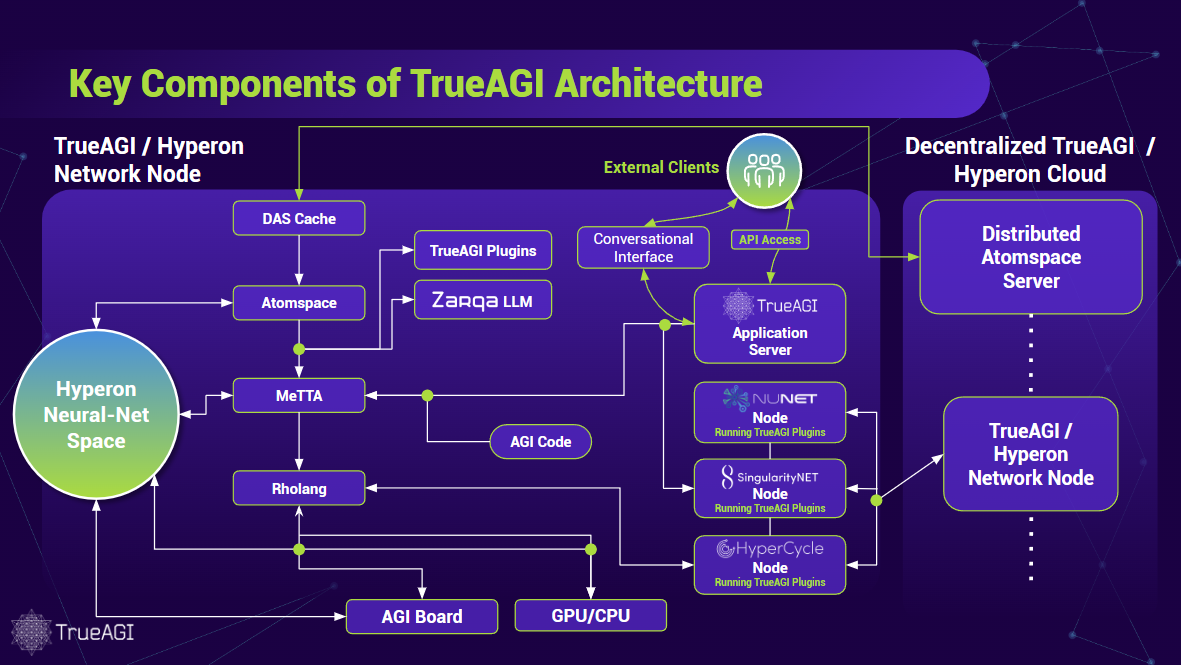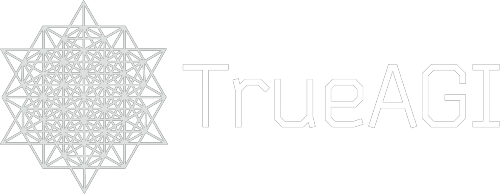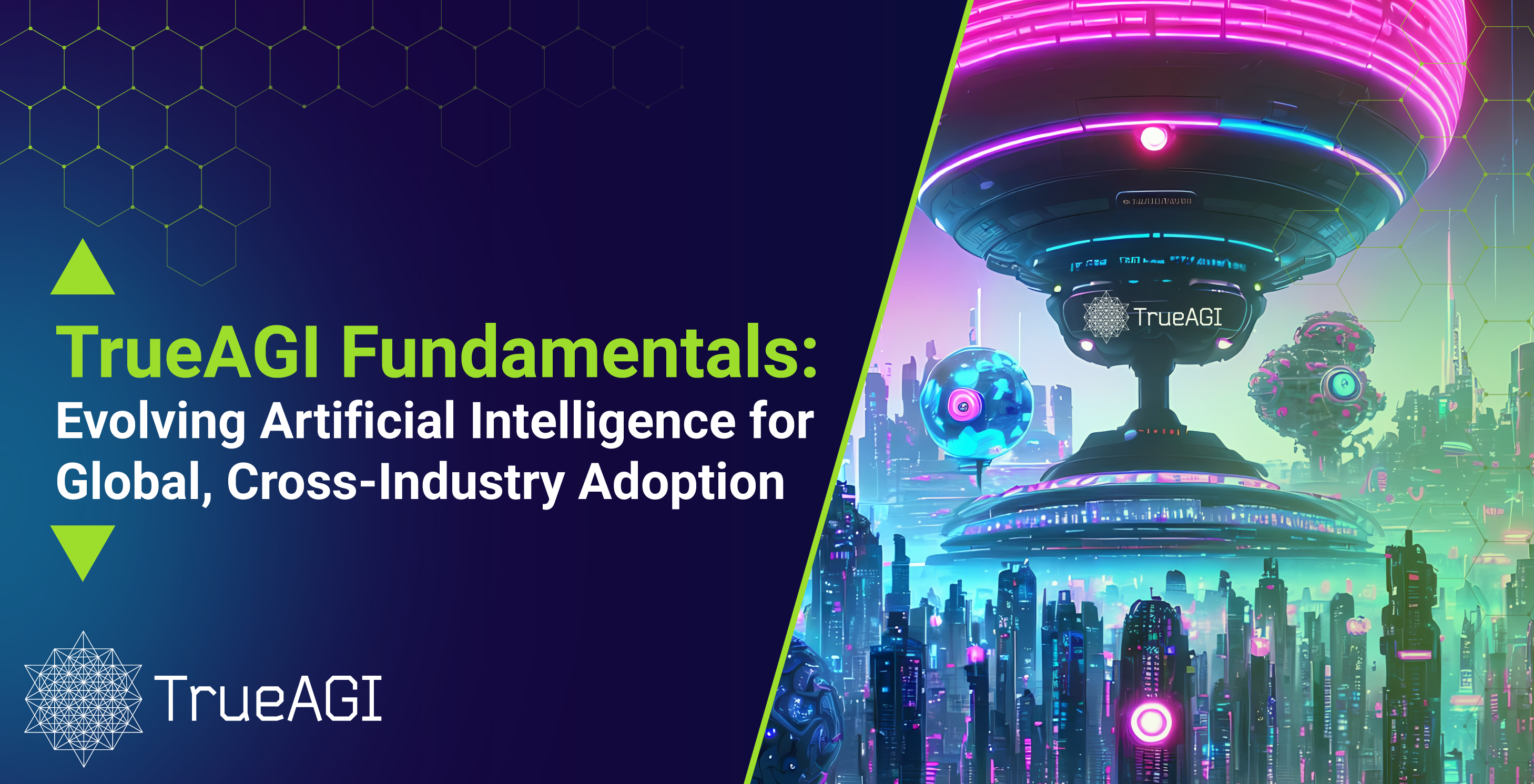AGI: Accelerating the World Towards Human-Level Thinking Machines
Artificial intelligence is not a new technology.
It has been around since 1965 and was present in many aspects of our life before 2023. Search engines, online translators, personal assistants—like Siri or Alexa—and even Netflix’s recommendation system are based on artificial intelligence.
However, these solutions only run on the back end of the apps we know, love, and use every day. They were intelligent enough to optimize the back end of our favorite services, but front end uses were limited and glitchy—how many times did Siri or Alexa completely not understand your request?
LLMs like ChatGPT and diffusion image generators like MidJourney have turned the old paradigm on its head. Finally, AI is capable enough to collaboratively create with us, like the assistant and companion we always wanted them to be.
Now, the world has had a taste of what it can do, but it still hasn’t discovered what it could do. In fact, we haven’t even scratched the surface of artificial intelligence’s true potential.
Limitations of Current Artificial Intelligence
Despite its name, AI as we know it today is not really “intelligent.”
Simply put, the most prevalent types of AI today, referred to in various contexts as neural nets and machine learning, consists of a very complex stimulus-response system in which we train computers to simulate the human thinking process by analyzing, processing and identifying patterns within a specific, massive data set to generate a response.
For instance, it can recognize a sandal versus a snow boot in an image based on the probability that a given pixel will be dark on a snow boot where it won’t on a sandal. It can recognize the pattern of pixels that most likely make up a certain shoe style, but has no idea what a shoe is.
The moment you take an AI outside of its data model, it becomes obsolete. It can’t really “think” like a human. In other words, artificial intelligence is only as comprehensive as the data it’s been trained on—it’s narrow. An AI trained to recognize and flag lung tumors is incapable of recognizing a tumor anywhere else in the body; these AI are highly capable in their domain, and of no use even in an adjacent domain.
Most importantly, these limitations represent a critical bottleneck in the development of AI-enabled solutions for social good and massive usage. In order to deliver truly compelling, problem-solving AI applications, we need to broaden the scope.
Artificial intelligence, while powerful, is not enough to solve enterprises biggest pain points. Only synergistic AI systems that can handle nuance and complexity will be able to address these.
And that’s exactly what TrueAGI is building.
Artificial General Intelligence: The Next Stage of AI
AI is essentially a process of training computers according to a set of specific data to recognize patterns, make decisions and generate responses like if we were interacting with another person.
Nevertheless, there’s no real “thinking” process behind it. It’s a stimulus-response mechanism. A human enters an input, the computer generates a response.
As an illustrative example, ChatGPT was trained with a data set of over 300 billion words, or 570 GB of information. Whenever you ask ChatGPT something, it dives into this vast set of data, analyzes its parameters, and returns a response based on the likelihood of these 300 billion words appearing after the previous one.
ChatGPT doesn’t really understand what it answers to you, it just knows the words in its response commonly appear together in the database it’s been trained with. In other words, ChatGPT doesn’t form a well-thought and reasoned answer and then formulate that into a response, as a human would—it just says the next most likely word in its database, until it gets to a period and stops.
Artificial general intelligence (AGI) differs from narrow AI in this fundamental aspect. While AI provides a set of parameters for the computer to use in making the best decision, AGI teaches a computer how to think and understand tasks, which enables it to transfer learning between tasks. Learning about lung tumors would allow an AGI to learn about all tumors, and it could then transfer this understanding across a wide range of domains with few examples.
In other words, AGI grants computers the ability to reason and understand in order to make well reasoned decisions or judgements that are based in reality—not probability. We’re not talking about stimulus-response anymore. AGI will have reasoning, inference, and problem solving abilities, and be able to make leaps beyond its training data..
Indeed, AGI that can emulate a human-level mind in applying logic, reasoning, and experience will unlock limitless applications for all industries, businesses and humanity overall.
By being able to think outside the box of narrow machine learning, AGI can provide truly unique and novel insights, including:
- Self-programming: AGI can read and rewrite its own source code—creating advanced opportunities for self-optimization.
- Customizable: Its versatility, adaptability, and strategic thinking allows for tailored AGI solutions for specific and complex scenarios.
- Low data and energy usage: By being able to infer beyond its training data set, AGI requires less information to produce a proper response, as it can apply experience, logic and reasoning to “fill the gaps.” This fundamentally different approach requires less data and compute resources, which translates into better energy efficiency.
Now, this type of technology doesn’t actually exist yet, but the OpenCog team has created the most advanced neural-symbolic AGI framework in the world: OpenCog Hyperon. This framework is poised to implement neural-symbolic solutions for enterprise, and finally make the breakthrough to true AGI.
TrueAGI and OpenCog Hyperon: Moving Artificial Intelligence Forward
TrueAGI was founded in 2021 by Dr. Ben Goertzel—considered by many as the father of artificial general intelligence—with the goal to make AGI solutions available to enterprises and businesses of all industries at a global scale.
By partnering with organizations to help integrate, develop and maintain an AGI strategy, TrueAGI puts benevolence, trust, ethics, safety, and security as the top priorities for AI standards, and allows forward looking businesses to be at the forefront of humanity’s arguably most significant invention: artificial general intelligence.
Three Infrastructure Pillars for Artificial General Intelligence
Recent advancements in AI have been exciting and are already in the process of transforming the way we work, create and interact with each other, computers, and information.
Yet, these developments are not enough to achieve human-like intelligence and cognition. There are still some critical obstacles that we need to address, like enabling intuition, and creativity, among others.
These are not easy challenges to face, which is why we’ll need to develop new solutions and infrastructure that helps us do it.
To that end, TrueAGI has developed, implemented, and partnered with critical infrastructure providers to make AGI a reality for business worldwide.
Discovering OpenCog Hyperon
OpenCog Hyperon is a state-of-the-art, open source framework especially designed for artificial general intelligence.
What is an artificial intelligence framework? Simply put, these frameworks provide data scientists, developers, and researchers with tools for designing, training, testing, and deploying AI models—like an API specialized in artificial intelligence.
OpenCog Hyperon provides a set of essential resources that will help us pave the way towards human-like artificial intelligence. Two of them worth mentioning are the Atomspace metagraph database and the Meta Type Talk (MeTTa) programming language.
There is also a third, external element that is crucial in the system: the Rholang concurrent programming language.
We’ll explain them one by one.
Atomspace: The Knowledge Base AGI Needs
The Hyperon architecture centers on the Atomspace—a weighted labeled metagraph knowledge store that encodes all the types of knowledge needed for a human-like intelligent mind—including the reasoning and learning processes themselves.
A weighted graph is a data structure where each edge has a value associated with them (called weight). These weights are often used to compute the shortest path in the graph. In artificial intelligence, they are a common solution for decision-making processes.
It is commonly difficult to have multiple AI algorithms—such as probabilistic inference, neural networks, and evolutionary methods—working together to solve a single problem since they work quite differently. The internal dynamics and intermediate representations of different AI algorithms are fundamentally different from one another. This makes it difficult for meta-learning to identify patterns in context-specific applications that combine multiple aspects of the internal operations of two different AI systems.
By enabling streamlined navigation through knowledge bases, the Atomspace provides a route to resolving this core difficulty found in creating systems that leverage the full scope of insight achieved by the AI community over the last half-century.
MeTTa: Enabling Computers to Behave Like Humans
MeTTa (Meta Type Talk) is a novel programming language created for the OpenCog Hyperon AGI system. It is designed as a meta-language with very basic and general facilities for handling symbols, groundings, variables, types, substitutions and pattern matching.
This programming language focuses on grounded knowledge representation and reasoning with inference control and neural-symbolic integration in mind. The MeTTa language is the native language of the Atomspace, allowing human-readable representation and creation of Atomspace structures. In short, this programming language is specifically designed to program computers like the human brain is wired.
Rholang: Allowing Computers to Multitask
Rholang was founded on Lucius Meredith’s groundbreaking rho calculus mathematics. It provides incomparable sophistication at concurrent programming. In other words, it allows multiple processes to start, run, and complete in overlapping periods of time in an efficient manner, saving both time and resources.
By integrating Rholang, TrueAGI can fast-track development of a scalable high-speed interpreter for Hyperon’s MeTTa language. In turn, MeTTa fully leverages concurrent processing and is fully blockchain ready, via incorporation of Rholang on the back end.
However, the critical property that makes Rholang so valuable is called reflection. This is what allows a program to inspect or operate on itself by modifying its data to self-update, thus enabling true metaprogramming—an absolutely necessary component for any real AGI.
…
While these components are extremely valuable on their own, it’s their synergy within an artificial intelligence framework—OpenCog Hyperion—that makes them truly revolutionary, and brings us closer than we’ve ever been to achieving true artificial general intelligence.
It will be this technology that will help us achieve human-level artificial general intelligence; and TrueAGI’s ability to turn it into beneficial solutions that will make it massively accessible all over the world.

The Future of AI: Next Steps to Achieve AGI
Google, Facebook, and Amazon have successfully implemented back-end concurrent-processing software libraries, which have dramatically sped up processing of their neural nets and other statistical learning algorithms to achieve significant advances in AI.
Yet, these standard methods are too simplistic and not well-suited for many of the metagraph-based algorithms leveraged in OpenCog—which we believe to comprise the shortest path to human-level AGI.
Artificial intelligence has reached an impasse. We now face a necessity for developing algorithms, hardware, and an entire infrastructure supporting more complex machine learning, large language models, and natural language processing approaches that help us surpass these obstacles and make global access to AGI a reality.
There is still a long way to go, but thanks to SingularityNET, OpenCog Hyperon, MeTTA, Rholang and the amazing team led by Dr. Goertzel, TrueAGI now has the foundations of that infrastructure in place.
These resources will allow us to accelerate progress towards a human-like AGI that we can leverage, use, and apply to build real solutions for businesses, enterprises, and entire industries at a global scale.


Subscribe to our Newsletter
Email Address